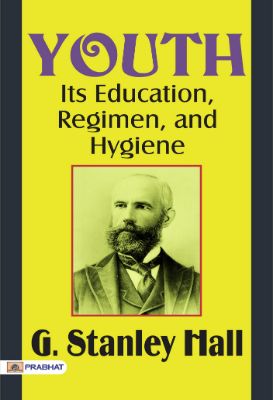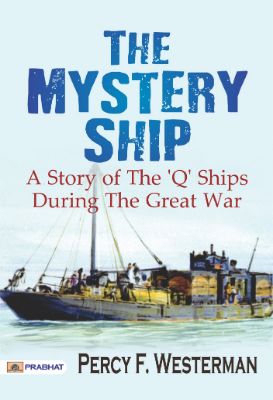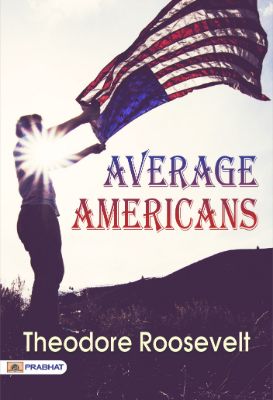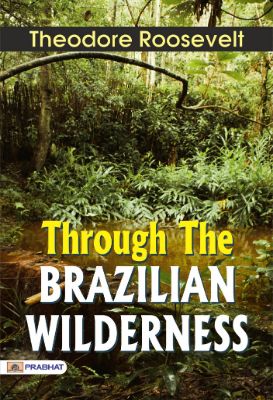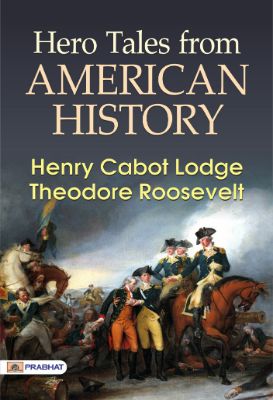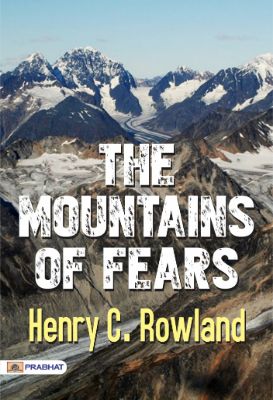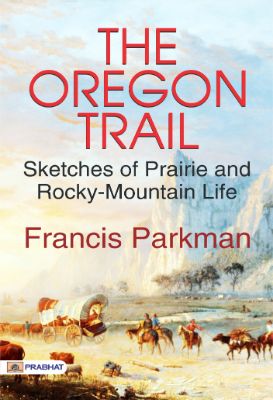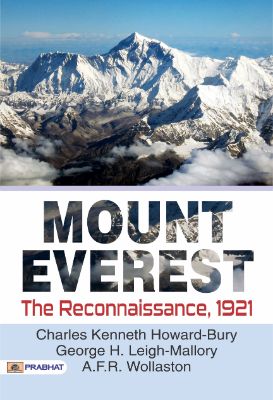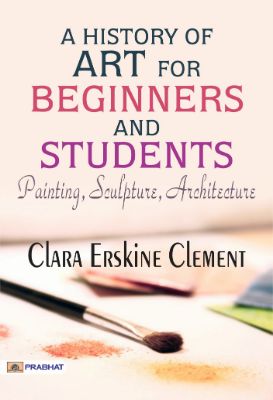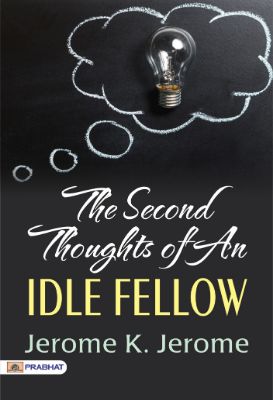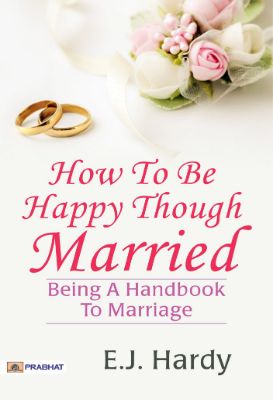Youth: Its Education, Regimen, and Hygiene by G. Stanley Hall
I have often been asked to select and epitomize the practical and especially the pedagogical conclusions of my large volumes on Adolescence, published in 1904, in such form that they may be available at a minimum cost to parents, teachers, reading circles, normal schools, and college classes, by whom even the larger volumes have been often used. This, with the coöperation of the publishers and with the valuable aid of Superintendent C.N. Kendall of Indianapolis, I have tried to do, following in the main the original text, with only such minor changes and additions as were necessary to bring the topics up to date, and adding a new chapter on moral and religions education. For the scientific justification of my educational conclusions I must, of course, refer to the larger volumes. The last chapter is not in “Adolescence,” but is revised from a paper printed elsewhere. I am indebted to Dr. Theodore L. Smith of Clark University for verification of all references, proof-reading, and many minor changes.
The Nervous Child by Hector Charles Cameron
To-day on all sides we hear of the extreme importance of Preventive Medicine and the great future which lies before us in this aspect of our work. If so, it follows that the study of infancy and childhood must rise into corresponding prominence. More and more a considerable part of the Profession must busy itself in nurseries and in schools, seeking to apply there the teachings of Psychology, Physiology, Heredity, and Hygiene. To work of this kind, in some of its aspects, this book may serve as an introduction. It deals with the influences which mould the mentality of the child and shape his conduct. Extreme susceptibility to these influences is the mark of the nervous child.
The Confessions of St. Augustine by Bishop of Hippo Saint Augustine No cover available
Great art Thou, O Lord, and greatly to be praised; great is Thy power, and Thy wisdom infinite. And Thee would man praise; man, but a particle of Thy creation; man, that bears about him his mortality, the witness of his sin, the witness that Thou resistest the proud: yet would man praise Thee; he, but a particle of Thy creation. Thou awakest us to delight in Thy praise; for Thou madest us for Thyself, and our heart is restless, until it repose in Thee. Grant me, Lord, to know and understand which is first, to call on Thee or to praise Thee? and, again, to know Thee or to call on Thee? for who can call on Thee, not knowing Thee? for he that knoweth Thee not, may call on Thee as other than Thou art. Or, is it rather, that we call on Thee that we may know Thee? but how shall they call on Him in whom they have not believed? or how shall they believe without a preacher? and they that seek the Lord shall praise Him: for they that seek shall find Him, and they that find shall praise Him. I will seek Thee, Lord, by calling on Thee; and will call on Thee, believing in Thee; for to us hast Thou been preached. My faith, Lord, shall call on Thee, which Thou hast given me, wherewith Thou hast inspired me, through the Incarnation of Thy Son, through the ministry of the Preacher.
The Discipline of War by John Hasloch Potter
The war has introduced into countless lives new conditions, and has strangely modified, or emphasised, those already existing. These Addresses, prepared under much stress of other work, are intended to supply, in very simple fashion, hints for conduct and points for thought along the lines of our fresh or deepened responsibilities. An Appendix gives a suggested subject and a passage of Scripture for each day during Lent. May God the Holy Ghost, without Whom man’s best labours are in vain, bless this little book to its purpose. Please say a prayer for the writer, who, as much as any, needs grace that he may try to practise what he preaches.
The Burgess Animal Book for Children by Thornton W. Burgess
The cordial reception given the Burgess Bird Book for Children, together with numerous letters to the author asking for information on the habits and characteristics of many of the mammals of America, led to the preparation of this volume. It is offered merely as an introduction to the four-footed friends, little and big, which form so important a part of the wild life of the United States and Canada.
There has been no attempt to describe or classify sub-species. That is for the scientist and student with specific interests. The purpose of this book is to acquaint the reader with the larger groups—orders, families, and divisions of the latter, so that typical representatives may be recognized and their habits understood.
The Babes in the Basket by Sarah S. Baker
The evening air stole gently into a quiet room in a southern island, more than sixty years ago.
There were no casements in the wide windows; the heavy shutters were thrown back, and the moonlight poured, in long, unbroken streams, across the polished, un-carpeted floor.
Cinderella Or, The Little Glass Slipper And Other Stories by Anonymous Authors
Once there was a gentleman who married for his second wife the proudest and most haughty woman that was ever seen. She had by a former husband two daughters of her own humor, who were, indeed, exactly like her in all things. He had likewise, by another wife, a young daughter, but of unparalleled goodness and sweetness of temper, which she took from her mother, who was the best creature in the world.
No sooner were the ceremonies of the wedding over but the mother-in-law began to show herself in her true colors. She could not bear the good qualities of this pretty girl, and the less because they made her own daughters appear the more odious. She employed her in meanest work of the house: she scoured the dishes, tables, etc., and scrubbed madam’s chamber and those of misses, her daughters; she lay up in a sorry garret, upon a wretched straw bed, while her sisters lay in fine rooms, with floors all inlaid, upon beds of the very newest fashion, and where they had looking-glasses so large that they might see themselves at their full length from head to foot.
Book about Animals by Rufus Merrill
Is the biggest of all land animals. He is more than five times as big as an ox. But he is a harmless creature, for all that. When he is wild, and lives in the woods, he will run away, if you attempt to go near him. When he is tame, he will take a piece of cake out of your pocket, and let you ride upon his back.
Animal Heroes by Ernest Thompson Seton
A hero is an individual of unusual gifts and achievements. Whether it be man or animal, this definition applies; and it is the histories of such that appeal to the imagination and to the hearts of those who hear them.
In this volume every one of the stories, though more or less composite, is founded on the actual life of a veritable animal hero. The most composite is the White Reindeer. This story I wrote by Utrovand in Norway during the summer of 1900, while the Reindeer herds grazed in sight on the near uplands.
The Lynx is founded on some of my own early experiences in the backwoods.
It is less than ten years since the ‘Jack Warhorse’ won his hero-crown. Thousands of “Kaskadoans” will remember him, and by the name Warhorse his coursing exploits are recorded in several daily papers.
The least composite is Arnaux. It is so nearly historical that several who knew the bird have supplied additional items of information.
The Infant System by Samuel Wilderspin
In again presenting this volume to the world, I trust I feel thankful to God for the favour with which the Infant System has been received, and for all the aid I have enjoyed in my course of labour. Had the measures I originated for the development of the infant mind, and the improvement of the moral character, been sanctioned at first, as many now think they should have been, their progress would, undoubtedly, have been far greater; but when I consider what has been accomplished under the divine benediction, and amid greater difficulties than ever beset the path of an individual similarly occupied, I know not how to express the gratitude of which I am conscious. It seems proper and even necessary to remark, that the system explained in this volume, is the result of many years of labour. Thousands of children have been attentively observed, and for the necessities that arose in their instruction, provision has been made.
Victor Ollnee’s Discipline by Hamlin Garland
Saturday had been a strenuous day for the baseball team of Winona University, and Victor Ollnee, its redoubtable catcher, slept late. Breakfast at the Beta Kappa Fraternity House on Sunday started without him, and Gilbert Frenson, who never played ball or tennis, and Arnold Macey, who was too effeminate to swing a bat, divided the Sunday morning Star between them.
Discipline and Other Sermons by Charles Kingsley
These were the words of the Eastern sage, as he looked down from the mountain height upon the camp of Israel, abiding among the groves of the lowland, according to their tribes, in order, discipline, and unity. Before a people so organized, he saw well, none of the nations round could stand. Israel would burst through them, with the strength of the wild bull crashing through the forest. He would couch as a lion, and as a great lion. Who dare rouse him up?
Searchlights on Health: The Science of Eugenics by B. G. Jefferis and J. L. Nichols
The old maxim, that “Knowledge is power,” is a true one, but there is still a greater truth: “KNOWLEDGE IS SAFETY.” Safety amid physical ills that beset mankind, and safety amid the moral pitfalls that surround so many young people, is the great crying demand of the age.
A Dictionary of the First or Oldest Words in the English Language by Coleridge
he present publication may be considered as the foundation-stone of the Historical and Literary portion of the Philological Society’s proposed English Dictionary. Its appearance in a separate form has been necessitated by the nature of the scheme, on which that work is being constructed. Without entering into details, which will be found in the Society’s published Prospectus, it will be sufficient for the present purpose to mention, that the raw material of the Dictionary, the words and authorities, are being brought together by a number of independent collectors, for whom it is consequently necessary to provide some common standard of comparison, whereby each may ascertain what he is to extract, and what to reject, from the author, or work, he has undertaken.
Essentials of Economic Theory by John Bates Clark
In a work on the “Distribution of Wealth,” which was published in 1899, I expressed an intention of offering later to my readers a volume on “Economic Dynamics, or The Laws of Industrial Progress.” Though eight years have since passed, that purpose is still unexecuted, and it has become apparent that any adequate treatment of Economic Dynamics will require more than one volume of the size of the present one. In the meanwhile it is possible to offer a brief and provisional statement of the more general laws of progress.
The Mystery Ship : A Story of the ‘Q’ Ships During the Great War by Percy F. Westerman
George—otherwise Kenneth Meredith, sub-lieutenant R.N.V.R. and second-in-command of H.M. Motor Launch 1071—deliberately blotted five lines of his weekly epistle to the fond ones at home. Unperturbed by a heavy fusillade upon the deck—the sound being caused by a broken golf club vigorously manipulated by an as yet invisible person—Meredith dexterously threw into envelopes and blotting-pad into a conveniently placed rack, rammed the cork into the glass ink-bottle, and thrust his fountain-pen, which either “founted” like a miniature Niagara or else obstinately refused to “fount” at all, into the breast pocket of his monkey-jacket.
Soldiers’ Stories of the War by Walter Wood and A. C. Michael
All the stories in this volume are told by men who were seen personally, and who, with one or two exceptions—cases of soldiers who had returned to the front—read the typescripts of their narratives, so that accuracy should be secured. The narrators spoke while the impressions of fighting and hardships and things seen were still strong and clear; in several cases full notes had been made or diaries kept, and reference to these records was of great value in preparing the stories. When seeing an informant I specially asked that a true tale should be told, and I believe that no unreliable details were knowingly given.
Average Americans by Theodore Roosevelt
All our lives my father treated his sons and daughters as companions. When we were not with him he wrote to us constantly. Everything that we did we discussed with him whenever it was possible. All his children tried to live up to his principles. In the paragraphs from his letters below, he speaks often of the citizens of this country as “our people.” It is for all these, equally with us, that the messages are intended.
Through the Brazilian Wilderness by Theodore Roosevelt
The official and proper title of the expedition is that given it by the Brazilian Government: Expedicao Scientifica Roosevelt- Rondon. When I started from the United States, it was to make an expedition, primarily concerned with mammalogy and ornithology, for the American Museum of Natural History of New York. This was undertaken under the auspices of Messrs. Osborn and Chapman, acting on behalf of the Museum. In the body of this work I describe how the scope of the expedition was enlarged, and how it was given a geographic as well as a zoological character, in consequence of the kind proposal of the Brazilian Secretary of State for Foreign Affairs, General Lauro Muller. In its altered and enlarged form the expedition was rendered possible only by the generous assistance of the Brazilian Government. Throughout the body of the work will be found reference after reference to my colleagues and companions of the expedition, whose services to science I have endeavored to set forth, and for whom I shall always feel the most cordial friendship and regard.
Hero Tales from American History by Henry Cabot Lodge and Theodore Roosevelt
It is a good thing for all Americans, and it is an especially good thing for young Americans, to remember the men who have given their lives in war and peace to the service of their fellow-countrymen, and to keep in mind the feats of daring and personal prowess done in time past by some of the many champions of the nation in the various crises of her history. Thrift, industry, obedience to law, and intellectual cultivation are essential qualities in the makeup of any successful people; but no people can be really great unless they possess also the heroic virtues which are as needful in time of peace as in time of war, and as important in civil as in military life. As a civilized people we desire peace, but the only peace worth having is obtained by instant readiness to fight when wronged—not by unwillingness or inability to fight at all. Intelligent foresight in preparation and known capacity to stand well in battle are the surest safeguards against war. America will cease to be a great nation whenever her young men cease to possess energy, daring, and endurance, as well as the wish and the power to fight the nation’s foes. No citizen of a free state should wrong any man; but it is not enough merely to refrain from infringing on the rights of others; he must also be able and willing to stand up for his own rights and those of his country against all comers, and he must be ready at any time to do his full share in resisting either malice domestic or foreign levy.
The Mountains of Fears by Henry C. Rowland
DOCTOR,” said my shipmate, Dr. Leyden, “have you ever made any especial study of nervous diseases—central nervous diseases—morbid conditions resulting from a derangement of the central cells?”
I told him that I had done only such work in this branch as a general practice would require, but that I had observed some few cases of especial interest during a military surgical service in the East, and proceeded to cite one or two instances of mental vagaries resulting from gunshot wounds in the head.
A Lady’s Life in the Rocky Mountains by Isabella L. Bird
I have found a dream of beauty at which one might look all one’s life and sigh. Not lovable, like the Sandwich Islands, but beautiful in its own way! A strictly North American beauty—snow-splotched mountains, huge pines, red-woods, sugar pines, silver spruce; a crystalline atmosphere, waves of the richest color; and a pine-hung lake which mirrors all beauty on its surface. Lake Tahoe is before me, a sheet of water twenty-two miles long by ten broad, and in some places 1,700 feet deep. It lies at a height of 6,000 feet, and the snow-crowned summits which wall it in are from 8,000 to 11,000 feet in altitude. The air is keen and elastic. There is no sound but the distant and slightly musical ring of the lumberer’s axe.
The Oregon Trail: Sketches of Prairie and Rocky-Mountain Life by Francis Parkman
Last spring, 1846, was a busy season in the City of St. Louis. Not only were emigrants from every part of the country preparing for the journey to Oregon and California, but an unusual number of traders were making ready their wagons and outfits for Santa Fe. Many of the emigrants, especially of those bound for California, were persons of wealth and standing. The hotels were crowded, and the gunsmiths and saddlers were kept constantly at work in providing arms and equipments for the different parties of travelers. Almost every day steamboats were leaving the levee and passing up the Missouri, crowded with passengers on their way to the frontier.
Mount Everest the Reconnaissance, 1921 by Charles Kenneth Howard-Bury, George H. Leigh-Mallory, A. F. R. Wollaston
The Mount Everest Committee of the Royal Geographical Society and the Alpine Club desire to express their thanks to Colonel Howard-Bury, Mr. Wollaston, Mr. Mallory, Major Morshead, Major Wheeler and Dr. Heron for the trouble they have taken to write so soon after their return an account of their several parts in the joint work of the Expedition. They have thereby enabled the present Expedition to start with full knowledge of the results of the reconnaissance, and the public to follow the progress of the attempt to reach the summit with full information at hand.
Music as a Language: Lectures to Music Students by Ethel Home
The following lectures were delivered to music students between the years 1907 and 1915. They have been partly rewritten so as to be intelligible to a different audience, for in all cases the lectures were followed by a discussion in which various points not dealt with in the lectures were elucidated.
An experience of eight years in organizing a training course for students who wish to teach ear-training on modern lines to classes of average children in the ordinary curriculum of a school has shown me that the great need for such students is to realize the problems, not only of musical education, but of general education.
Stained Glass Work: A text-book for students and workers in glass by Whall
You are to know that stained glass means pieces of coloured glasses put together with strips of lead into the form of windows; not a picture painted on glass with coloured paints.
You know that a beer bottle is blackish, a hock bottle orange-brown, a soda-water bottle greenish-white—these are the colours of the whole substance of which they are respectively made.
Talks To Teachers On Psychology; And To Students On Some Of Life’s Ideals by James
In 1892 I was asked by the Harvard Corporation to give a few public lectures on psychology to the Cambridge teachers. The talks now printed form the substance of that course, which has since then been delivered at various places to various teacher-audiences. I have found by experience that what my hearers seem least to relish is analytical technicality, and what they most care for is concrete practical application. So I have gradually weeded out the former, and left the latter unreduced; and now, that I have at last written out the lectures, they contain a minimum of what is deemed ‘scientific’ in psychology, and are practical and popular in the extreme.
A History of Art for Beginners and Students: Painting, Sculpture, Architecture by Clara Erskine Clement
In speaking of art we often contrast the useful or mechanical arts with the Fine Arts; by these terms we denote the difference between the arts which are used in making such things as are necessary and useful in civilized life, and the arts by which ornamental and beautiful things are made.
The Second Thoughts of an Idle Fellow by Jerome K. Jerome
“Now, which would you advise, dear? You see, with the red I shan’t be able to wear my magenta hat.”
“Well then, why not have the grey?”
“Yes—yes, I think the grey will be more useful.”
“It’s a good material.”
How to be Happy Though Married: Being a Handbook to Marriage by E. J. Hardy
Most of the books intended to give “counsel and ghostly strength” to newly-married people are so like a collection of sermons that they are given away rather than read. When writing the following pages I have remembered that the only kind of vice all people agree to shun is—advice, and have endeavoured to hide the pill. This is my excuse if at times I seem to fall into anecdotage.

